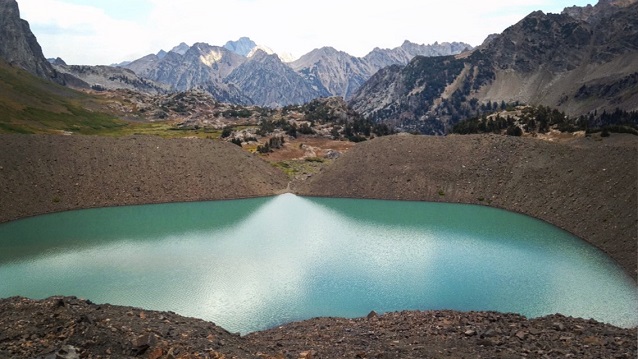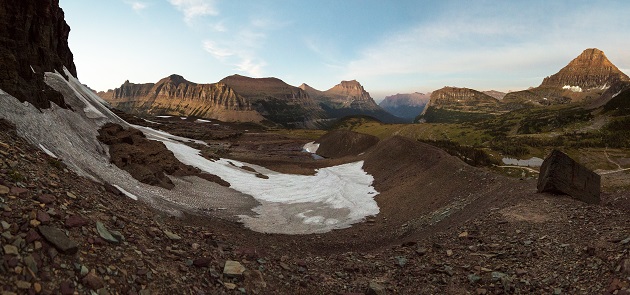
NPS Photo/Reba McCracken
Terminal and recessional moraines mark the farthest reaches of a glacier—its terminus—at a given point in time. They are usually built from rocks and debris that are transported to the glacier toe in the ice and melt out there.
If the glacier terminus stays in one position for a long time, more debris will accumulate there, building a larger moraine. As long as the glacier does not readvance, the moraine can be preserved for thousands of years!
If, on the other hand, a glacier retreats more quickly, and its terminal position changes every few years, it may leave a series of smaller recessional moraines, rather than a large terminal moraine.

NPS Photo/Jacob W. Frank
To learn more about glaciers, glacier features, and glacial landforms, see the Glaciers & Glacial Landforms Page.
Part of a series of articles titled Glacier Landforms.
Previous: Lateral and Medial Moraines
Last updated: February 22, 2018
